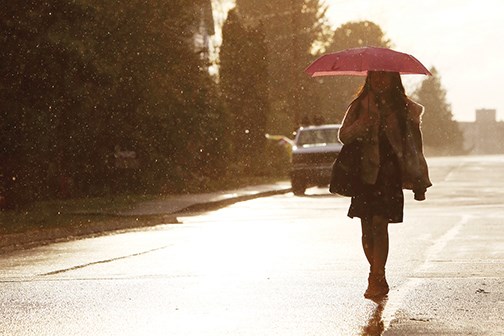Yes, that may have been the pitter patter of raindrops you felt.
We’ll be seeing more of it in the coming months, as summer officially gives way to the start of fall this week, with the autumnal equinox on Sept. 22.
But never fear.
Fall won’t be all bad, say meteorologists. In fact, temperatures are expected to remain higher than usual on the West Coast this fall and there will still be periods of sunny skies, said Erin Wenckstern, meteorologist for the Weather Network.
“There’s going to be some nice stretches,” she said.
The balmy weather this fall is being brought to the West Coast thanks to warm ocean temperatures in the North Pacific.
While this year isn’t an El Nino year – usually associated with warmer temperatures – a significant patch of warm Pacific water, dubbed “The Blob” by meteorologists, remains, said Wenckstern.
“It’s still warmer than normal sea surface temperatures off the West Coast,” she said.
Scientists originally thought “The Blob” had broken up, said Matt MacDonald, meteorologist with Environment Canada. But The Blob is back, and is continuing to influence weather patterns.
Meteorologists expect to see average monthly temperatures approximately one degree warmer than usual this fall, he said.
Earlier this year, meteorologists had hinted about the possibility of a La Nina weather pattern this winter – indicating colder than normal temperatures. But since then, signs of La Nina have plateaued, said both meteorologists and weather watchers are expecting close to normal weather trends.
Typically, fall sees daytime high temperatures drop by about five degrees each month, added Wenckstern. The average high for September is 18.9 degrees. That drops to 13.5 degrees by October and moves into single digits by November.
Rainfall also usually doubles monthly in the fall – from 50 to 60 millimetres in September to close to 200 mm in November.
The warm fall follows a warm summer. Temperatures were warmer than average for the eighth summer in a row, said MacDonald.
The summer was also slightly drier than average, with 85 per cent of normal rainfall, he added.



